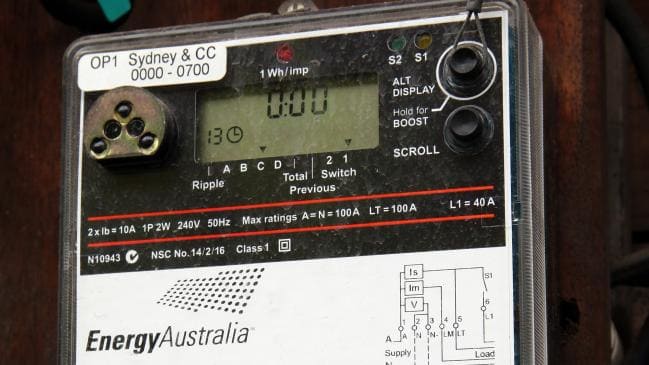
Rising electricity prices and reliability concerns have pushed the energy debate to the front of our national conscience.
Consumer and business trust in corporations and institutions is at a low ebb and against the backdrop of rising energy costs, Essential Research has identified the level of trust Australian consumers have for power companies is low. This has been fuelled by the carbon-pricing debate, our reliance on coal-fired power, restrictions on gas supply and the slow pace of renewables penetration over the past decade. Rising prices have also hurt low-income consumers and businesses in energy-intensive industries.
Thankfully for the energy sector, there is light at the end of the tunnel. Consumers are warming to the idea of taking more control over their energy use. They want to know how much it’s costing to run air-conditioners, pool pumps and washing machines. Australia’s 1.4 million residential swimming pools alone represent an aggregate load of 3700 megawatts (MW), roughly twice the capacity of the much-discussed Liddell power station.
There’s growing interest in renewable options. More people are looking at battery storage as a way of insuring against grid reliability issues. The Climate Council of Australia estimates the market for home battery storage tripled during 2017 with more than 20,000 installations. Three-quarters of Australians surveyed by Essential Research say they expect household batteries to be commonplace within the next decade.
This change in consumer behaviour and expectations is being driven by the application of data in so many other aspects of their lives. With mobile access to banking, personal health and retail information wherever and whenever they want it, it’s a natural progression to expect the same level of detail about energy use. When it comes to getting more information about energy use, 68 per cent of Australians say energy companies should be supplying it. The research, commissioned by integrated energy management solutions provider Landis+Gyr, also found 88 per cent of consumers would like to receive an alert when energy use patterns suggest they have a faulty appliance.
For energy companies, this means great opportunity lies at the grid edge. This concept is also known as “back of the meter” technology. We’re already living in a world where energy is no longer produced exclusively at power stations and distributed out across the grid. Increasingly, consumers will generate at least some of their power. They’ll store it in batteries for later use and sell it back to the grid when they have more than they need. How energy companies use the data generated by smart meters will be a major factor in how they differentiate services. They must overcome consumer concerns about privacy and security while finding cost-effective models for storing, analysing and acting on it.
Beyond that they will be focused on demand response, disaggregation and fault anomaly. Demand response reduces consumption and emissions while helping energy companies to better manage peak demand. These programs are currently promoted as a way of minimising the likelihood of blackouts but more could be done to promote the benefits of lower bills and greater convenience. Disaggregation breaks bills down to show what it costs to run individual appliances and fault anomaly notifies customers when one of those appliances isn’t working properly.
There are already great examples of smart meter technology in action. Australian energy retailer Origin Energy will allow customers with smart meters to monitor energy usage on individual household appliances without having to install sensors on individual devices. It provides insights by looking at real-time data from smart meters to identify the consumption behaviour of individual appliances from total power used. Global energy provider Engie lets customers change smart thermostat settings and see the real-time impact on energy bills. They receive inefficiency and fault alerts for home appliances and can monitor costs on an hourly, daily or monthly basis.
Energy companies will be increasingly reliant on technology to meet rapidly changing customer expectations. But they’re well-placed to do it.
Connected communication systems that link households and their rooftop solar systems to the grid are giving rise to the “internet of energy”. With our abundant wind and solar resources, supported by gas and the potential of hydro power, there’s a great opportunity to end the negativity around Australia’s energy market.
Being awarded the federal government’s Smart Grid/Smart City trial was one of the proudest moments during the eight years I served as managing director of EnergyAustralia. We believed there was great potential benefit for consumers.
As more smart meters are installed in Australian homes, consumer benefits will be driven by interconnection, data management and further innovation. This truly interconnected energy system will deliver cost-effective and efficient energy management. That’s something we can all look forward to.
